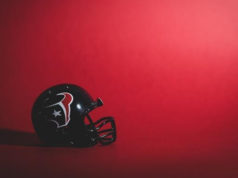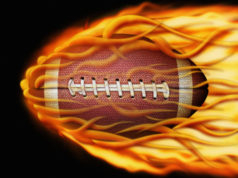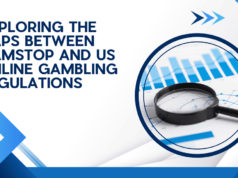Pop-up art raffles have emerged as one of the most engaging and accessible formats for community art engagement in Fort Worth. Blending elements of surprise, anticipation, and exclusivity, these events invite attendees to win limited-edition prints or small works of art by purchasing a simple raffle ticket. They often take place during gallery openings, weekend markets, or temporary exhibitions, giving local artists a chance to distribute their work while building buzz.
The growing popularity of these raffles lies not only in their ability to generate funding and visibility for artists but also in how they tap into fundamental human psychology. The combination of chance and choice is powerful. From the excitement of waiting for a number to be called to the design of the ticket or draw mechanism, every aspect is engineered to keep us emotionally invested.
The Thrill of Uncertainty
Pop-up raffles work because they connect to core psychological responses. Unlike auctions, which rely on strategy, or standard purchases, which offer certainty, raffles introduce unpredictability. This uncertainty is part of the appeal.
Dopamine and Decision
Dopamine is a neurotransmitter associated with reward. It is released in anticipation of a possible win, not just after receiving the reward. Holding a raffle ticket or watching a digital wheel spin triggers this release. The feeling is brief but compelling and enough to keep people participating again and again. Research from Wake Forest University School of Medicine indicates that dopamine release in the human brain plays a crucial role in encoding both reward and punishment prediction errors.
Scarcity and Value
Many pop-up raffles focus on limited-edition pieces, such as works that might only have 10 or 20 copies ever produced. When something is perceived as rare, it automatically becomes more desirable. Scarcity creates a psychological sense of urgency that motivates people to buy a ticket now rather than wait.
Social Proof and FOMO
People are heavily influenced by the actions of others. When we see others participating in a raffle, posting their tickets, or reacting to winners, it validates the experience. Fear of missing out on both the prize and the shared moment pushes people to get involved, especially in settings where community and creativity are celebrated.
Behind the Ticket: How Raffles Work
While raffles seem like informal and spontaneous moments, their structure is carefully designed to create engagement and fairness. Understanding how they function makes their effectiveness easier to appreciate.
Odds and Probabilities
Raffles operate on random selection. Each ticket has a mathematically equal chance of being drawn, which appeals to participants because it levels the playing field. There are no skills or insider advantages. The clarity of the odds, knowing your chances are tied directly to how many entries exist, makes the game feel fair and accessible.
Visual Cues and Gamification
Design plays a major role in keeping participants involved. Tickets with bold numbers, vibrant graphics, and embossed stamps give each entry a sense of value. Digital raffles enhance that with spinning wheels, countdown timers, and animated reveals that build tension just before the outcome appears.
That same visual logic shapes how users engage in digital environments centered on chance. At crowncoinscasino.com, a free-to-play experience, the interface uses flashing symbols, rhythmic pacing, and timed responses to build anticipation. Like pop-up raffles, it relies on visual patterns and subtle cues to keep attention focused and make each moment feel exciting, even when the reward is purely virtual.
Ticket design: Bold colors, unique numbering, and limited-edition stamps help each ticket stand out. These visuals heighten attention and create a sense of excitement before the draw even begins.
Entry interaction: Scanning a QR code or tapping a link adds an immediate layer of digital participation. This small action turns a passive viewer into an active participant.
Draw animations: Many digital raffles now include spinning wheels or countdown visuals. These elements simulate the pacing and suspense of game mechanics, making the moment of selection more dramatic.
Random rewards: The unpredictable nature of who wins mirrors the kind of instant feedback people experience in games. This taps into our desire for surprise and recognition.
Pattern engagement: Visual repetition, such as numbered sequences or color clustering, encourages participants to pay close attention. This keeps attention high and adds meaning to what is essentially a random process.
These techniques do more than decorate the experience. They are intentional design choices used to maintain engagement and turn a simple drawing into a memorable, shared event.
Community, Connection, and Competition
Pop-up raffles also serve a larger purpose in Cowtown’s cultural ecosystem. They are not just about winning prizes. They bring people together, raise funds, and support creative expression in tangible ways.
Collective Suspense
There is a communal energy in a room when the raffle is about to be drawn. Whether it is a crowded opening or a street corner market, people pause, listen, and hold their breath. That moment of shared suspense forms part of the overall value of the event.
Supporting Local Creators
Many artists and galleries rely on raffles to boost visibility and revenue. It allows people who may not have the budget to buy large works to still support artists directly. Every ticket sold contributes to future exhibitions, materials, and creative growth.
Friendly Rivalry
While raffles are based on luck, they still invite playful competition. Friends compare ticket numbers and joke about their chances. This element of rivalry creates deeper memories and encourages repeat participation. It also brings a sense of gamified fun to what is ultimately a form of artistic support.
The Rise of Digital Raffles
With the expansion of QR code technology and digital ticketing systems, raffles have become faster, more efficient, and more inclusive. Galleries are now using apps and web-based tools to run raffles in real-time, removing the need for paper tickets and manual tracking.
Instant draw results: Winners are announced live on screen or sent directly via text, creating immediate excitement.
Mobile access: Anyone with a smartphone can enter by scanning a code or clicking a link, making participation simple and accessible.
Automated tracking: All ticket entries and payments are recorded digitally, reducing the risk of errors and easing administrative work.
Wider participation: People no longer need to be physically present. Online entries allow raffles to reach beyond gallery walls and engage a broader audience.
Follow-up engagement: Organizers can easily contact participants for future events, special offers, or prize confirmations.
This shift to digital tools has not taken away the emotional rush of a raffle. Instead, it has enhanced the overall experience by combining anticipation with the convenience of instant interaction and greater reach.
Conclusion
Pop-up raffles blend creativity, psychology, and community engagement into a single, memorable experience. They offer an approachable way for people to support the arts while enjoying the thrill of anticipation. By combining chance with purpose, raffles turn passive viewing into active participation.
Whether hosted in a cozy gallery or woven into a citywide art crawl, these events tap into timeless instincts: curiosity, risk-taking, and the desire to belong. As Cowtown’s cultural scene continues to grow, the ongoing appeal of raffles shows that embracing uncertainty can be both fun and meaningful.












